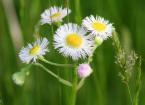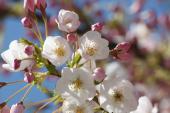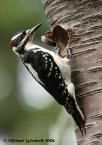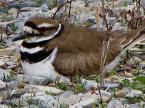Nature This Month: May

In many countries, May1 is celebrated as a spring festival. some places have Maypole dances and many activities out doors. Children make May baskets, garlands and bouquets of flowers to give away. Notice what flowers come into bloom in your area. Look in the woods, fields and gardens. Locate flowers on trees and shrubs.
Wildflowers
Wildflowers grow naturally in uncultivated places. Many have beautiful flowers and special growing needs. We need to be careful as to taking them, as many will not grow again.
examples: trout lily, lady’s slipper, jack-in-the-pulpit

Weeds
Beautiful wild flowers when grown out of place, like in someone’s garden or lawn, are called weeds. They can grow very rapidly and spread fast. These wild flowers are normally not showy and usualy have tiny flowers.
examples: clover, poison ivy, dandelion

Garden Flowers
These are the flowers that have been planted purposely and cared for inva garden or used in land scaping. Those that are planted each year are called annuals, and those that come up again without replanting are called perennials.
example: tulips, pansies, marigolds

Tree Flowers
Trees like cherry, magnolia and apple have beautiful flowers. These trees are sometimes used in landscaping because of their showy appearance. However all trees have flowers of some sort. Most are small and go unnoticed like maple. These flowers appear before the leaves emerge.

Birds Are Building Nests
Nests are make from various different different natural materials, according to the species of bird that is building. They are also built in various places, such as, rocky seacoasts, holes, in trees on the ground or in tree branches.
Downy Woodpecker – builds in a tree hole and digs down in the wood 8 to 10 inches, producing a layer of wood chips from digging to create a soft place to lay 3 to 6 eggs.

Broad-Winged Hawk – will build a nest of sticks and old leaves lining it with smaller twigs and bark or may use a nest that was abandoned by a crow or squirrel, laying 2-3 creamy whit eggs with dark streaks.

Oriole – will weave a basket like nest that is oblong that hangs from branches using grasses, strips of bark, or even string or wool laying 4 or 5 beige eggs that have brown streaks on them.

Killdeer – are ground builders, often in fields, gravel areas or even lawns, they form a depression unlined and filled with pebbles grass and wood chips laying 4 tan eggs that have dark markings for perfect camouflage.

May Facts
This is one of the busiest months with birds returning and flowers blooming, insects emerging and the days are varied with sun and rain. Many fish frogs and toads are laying eggs near or in water. The may full moon has been called the Full Flower Moon by some native America tribes.
